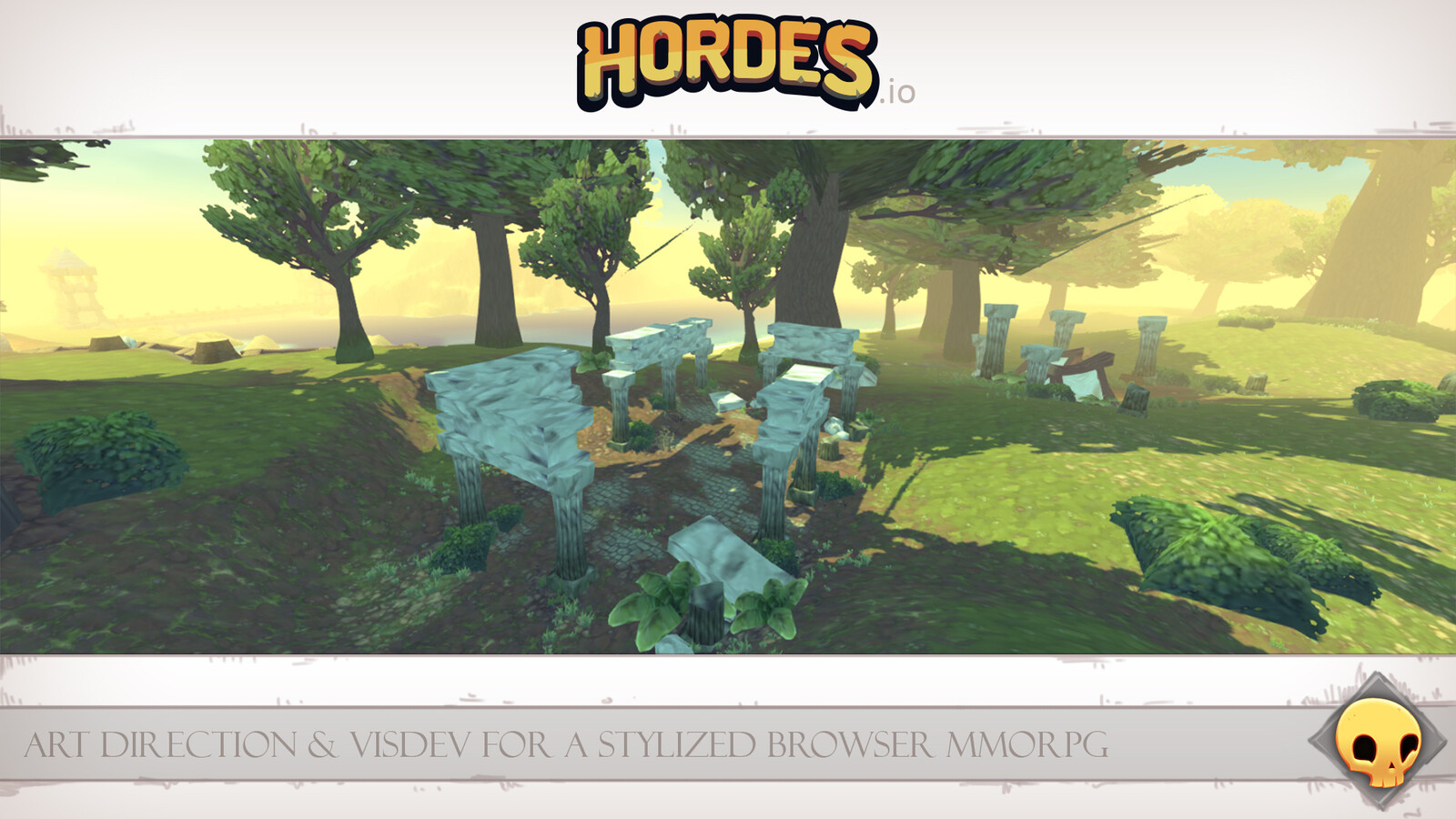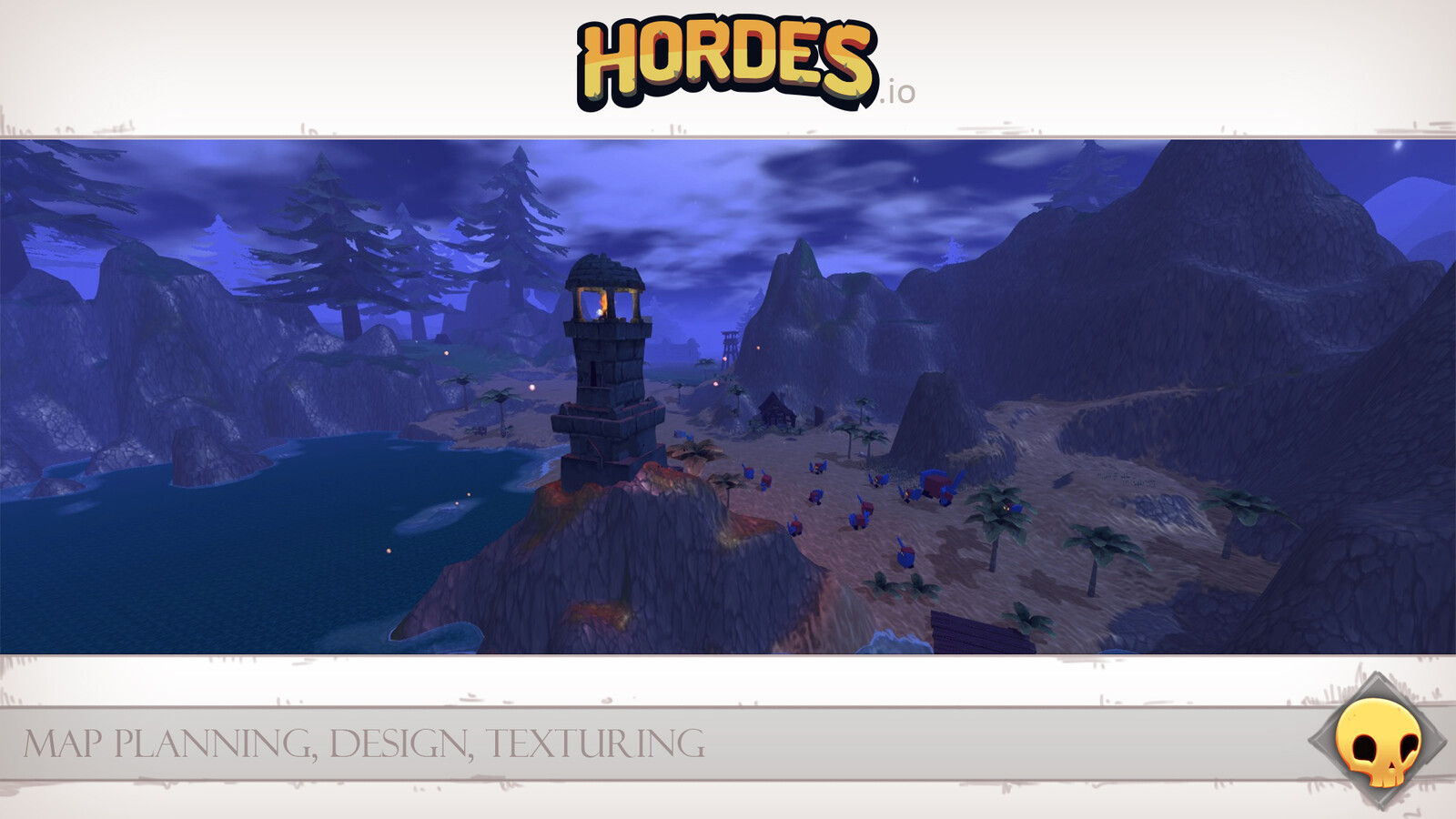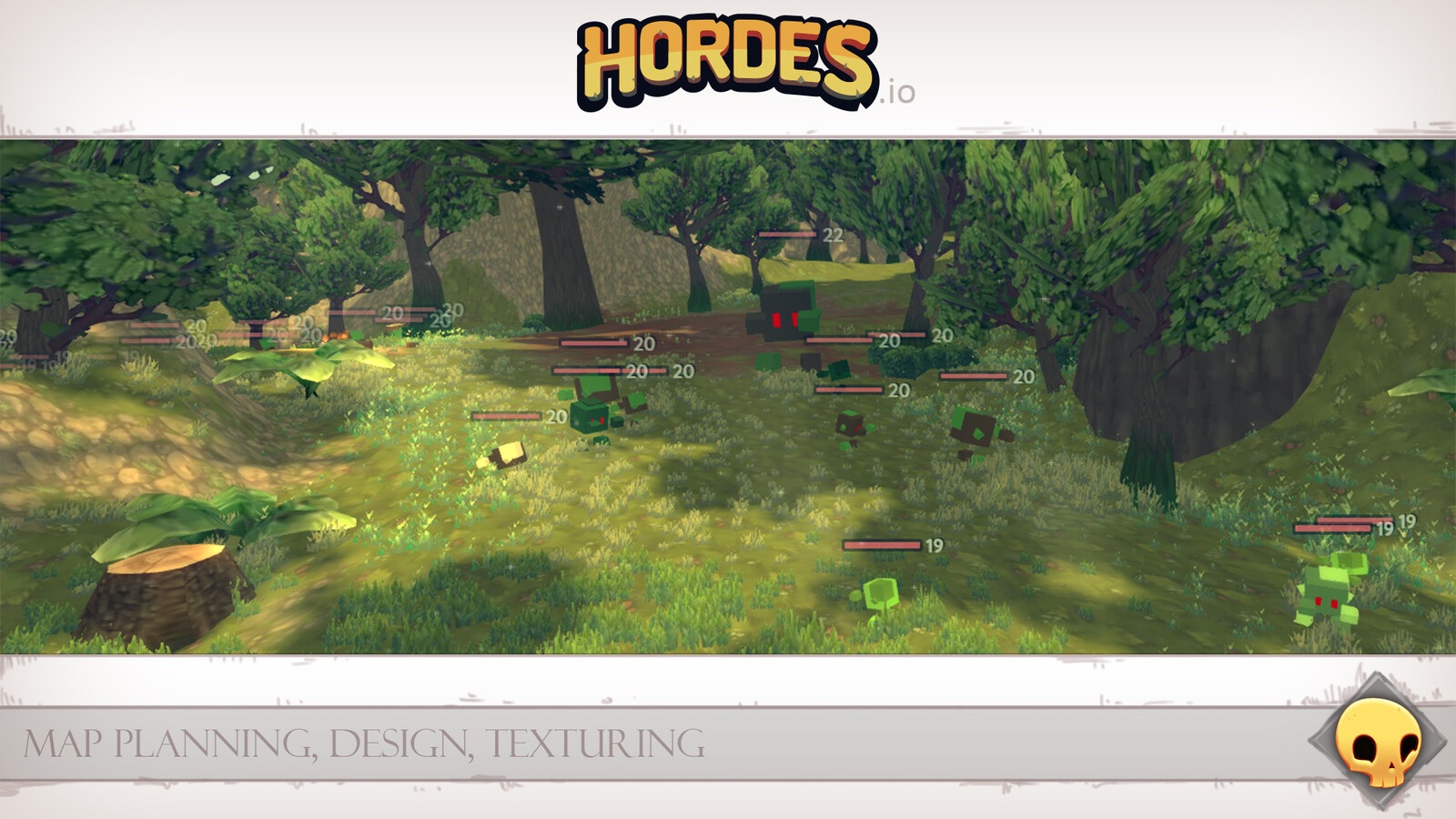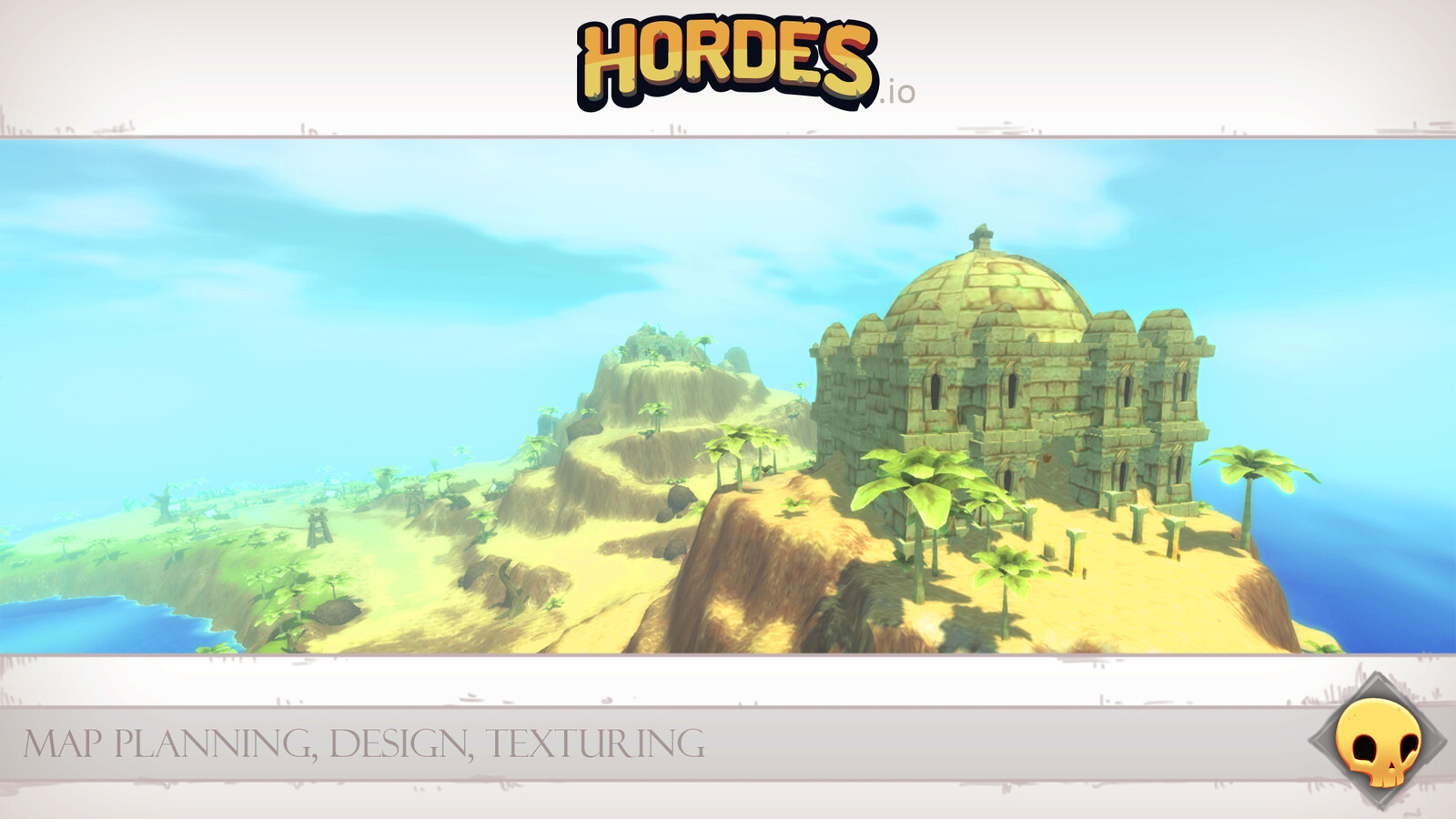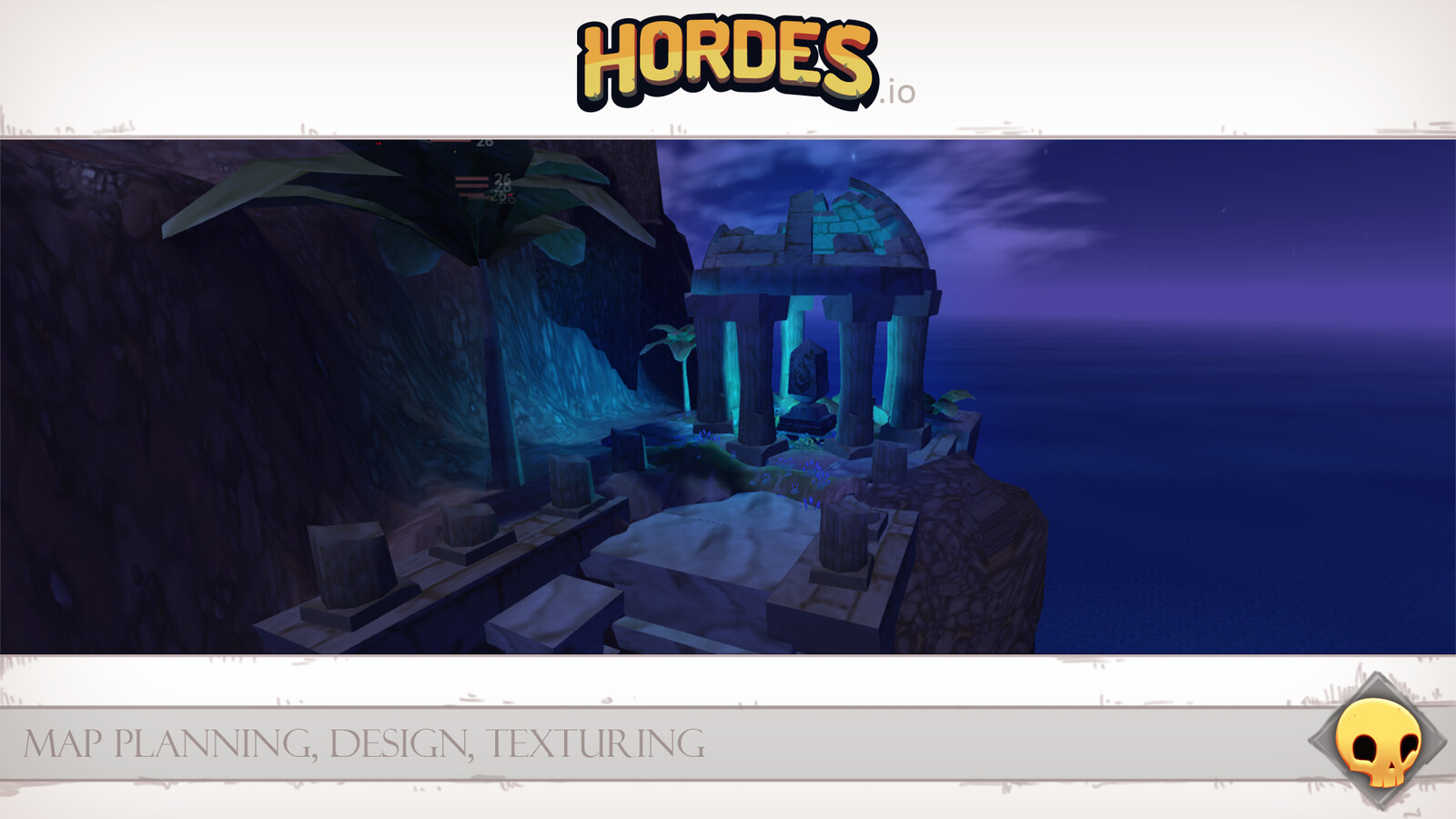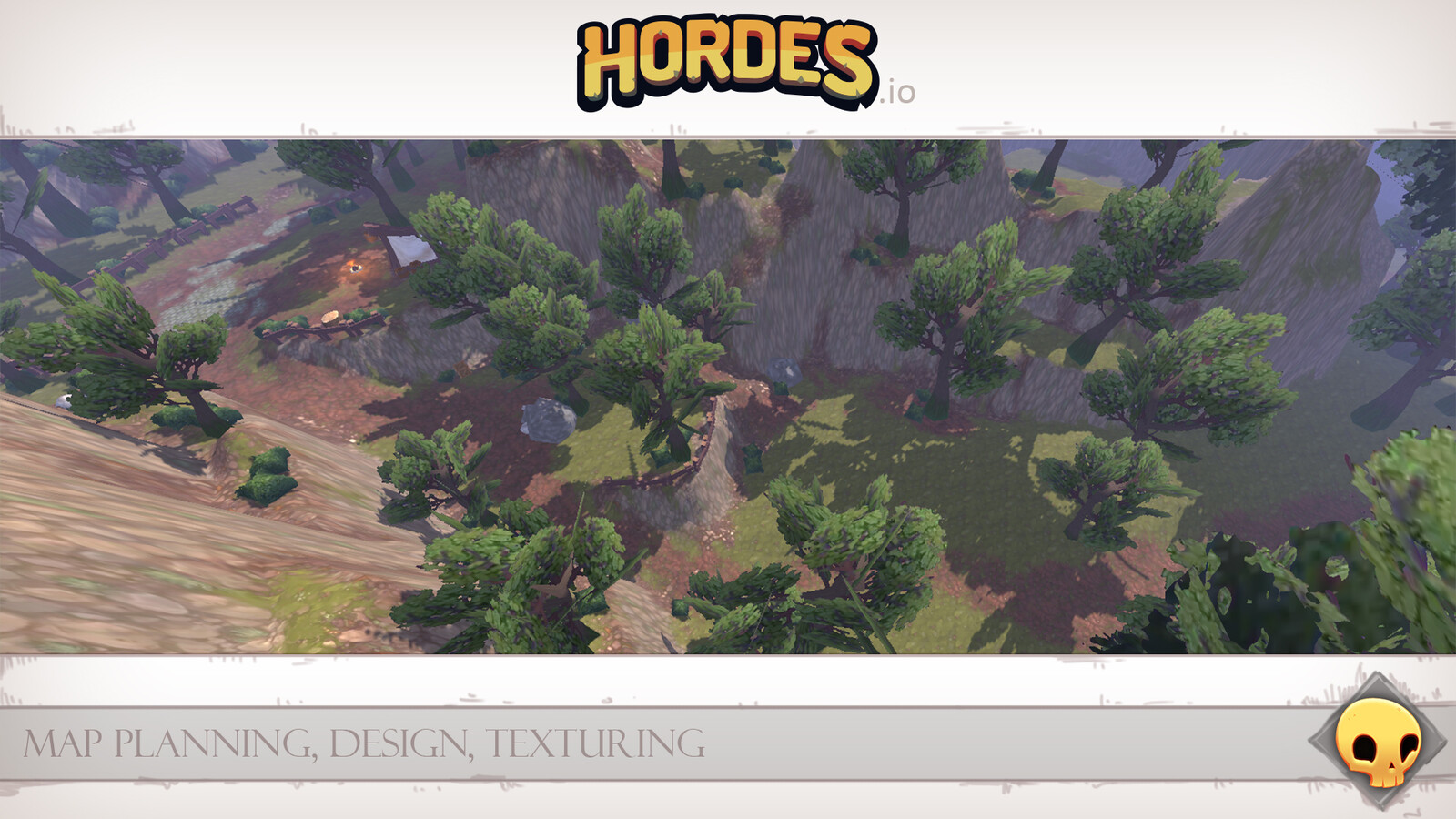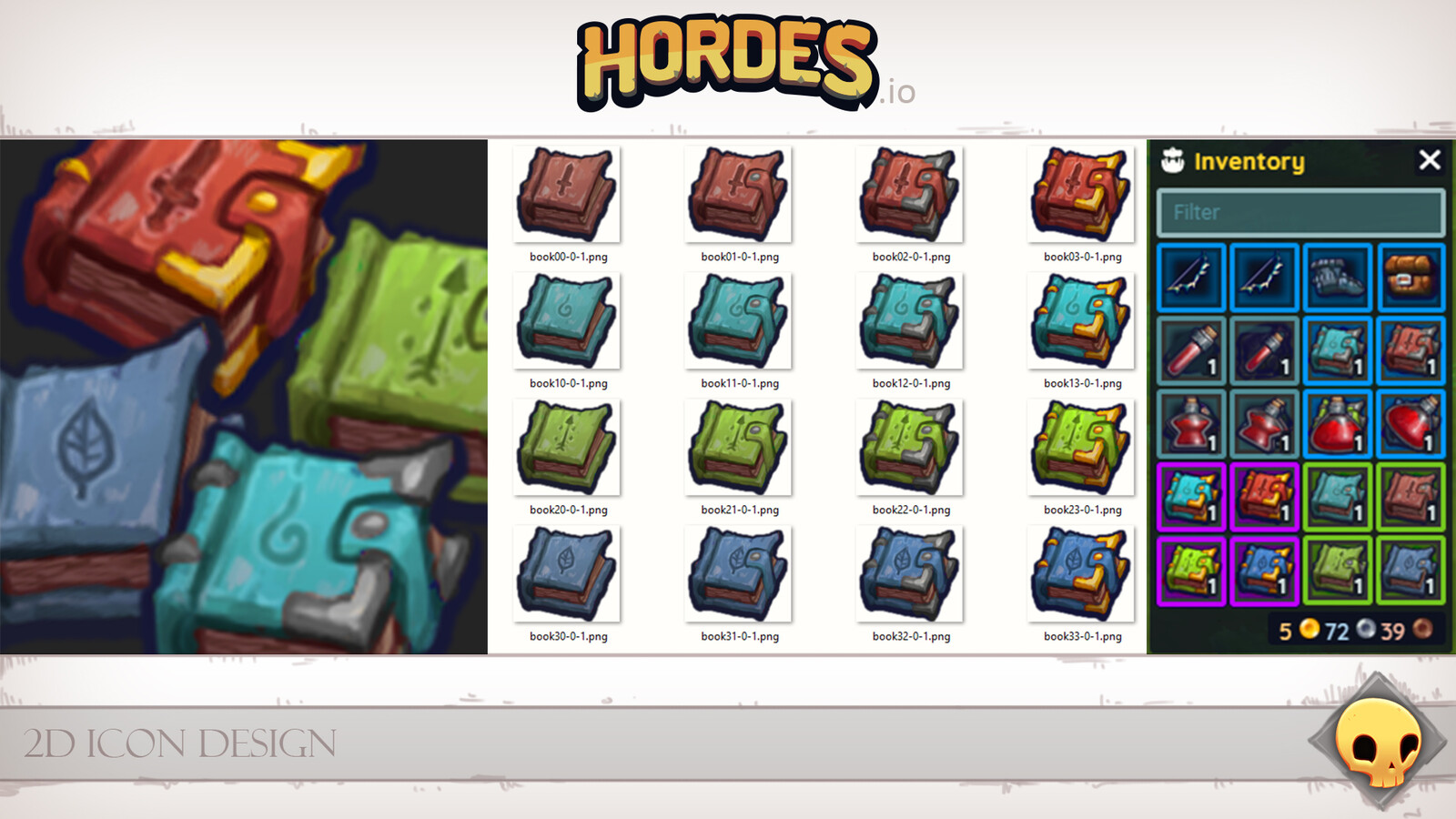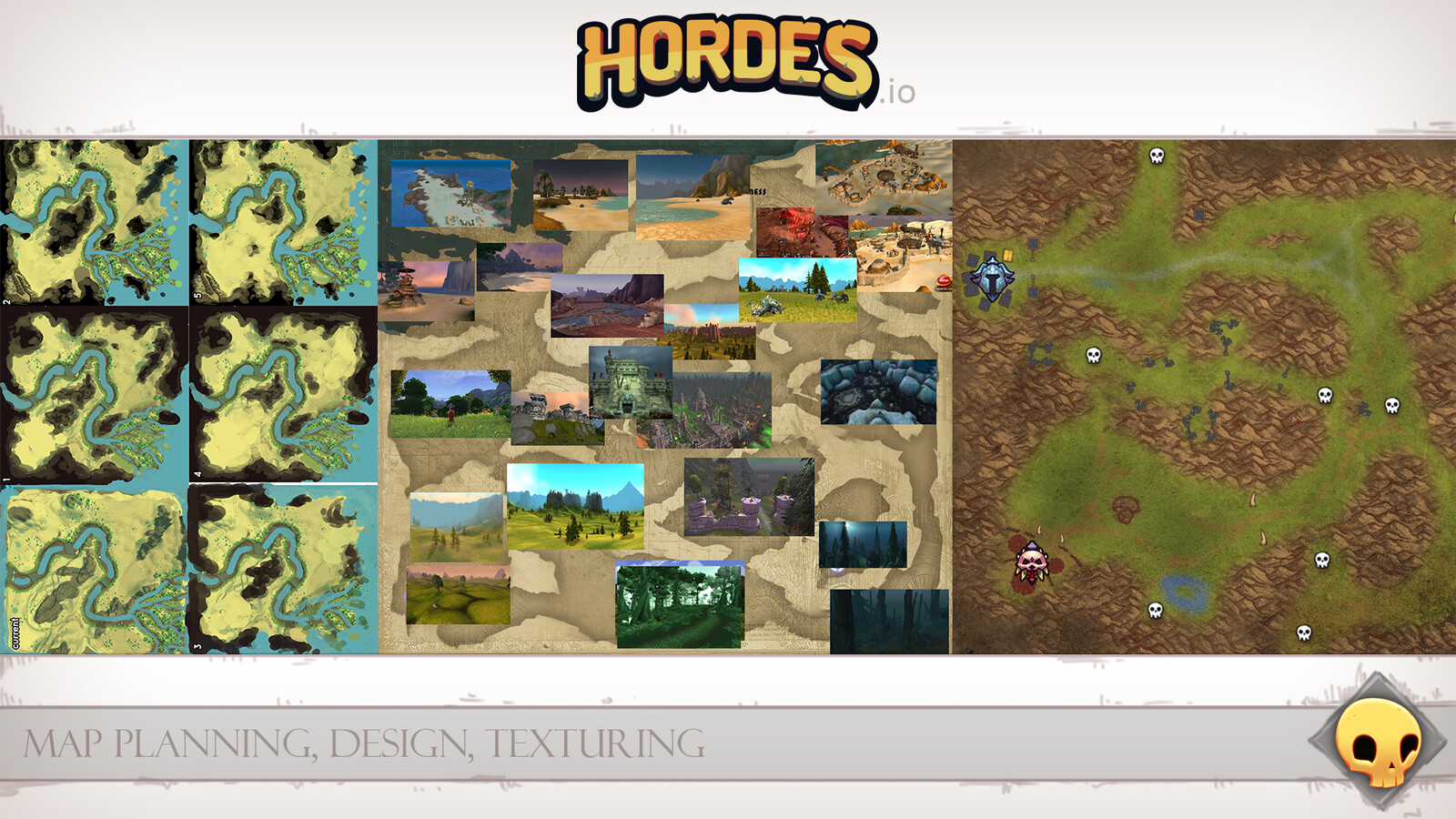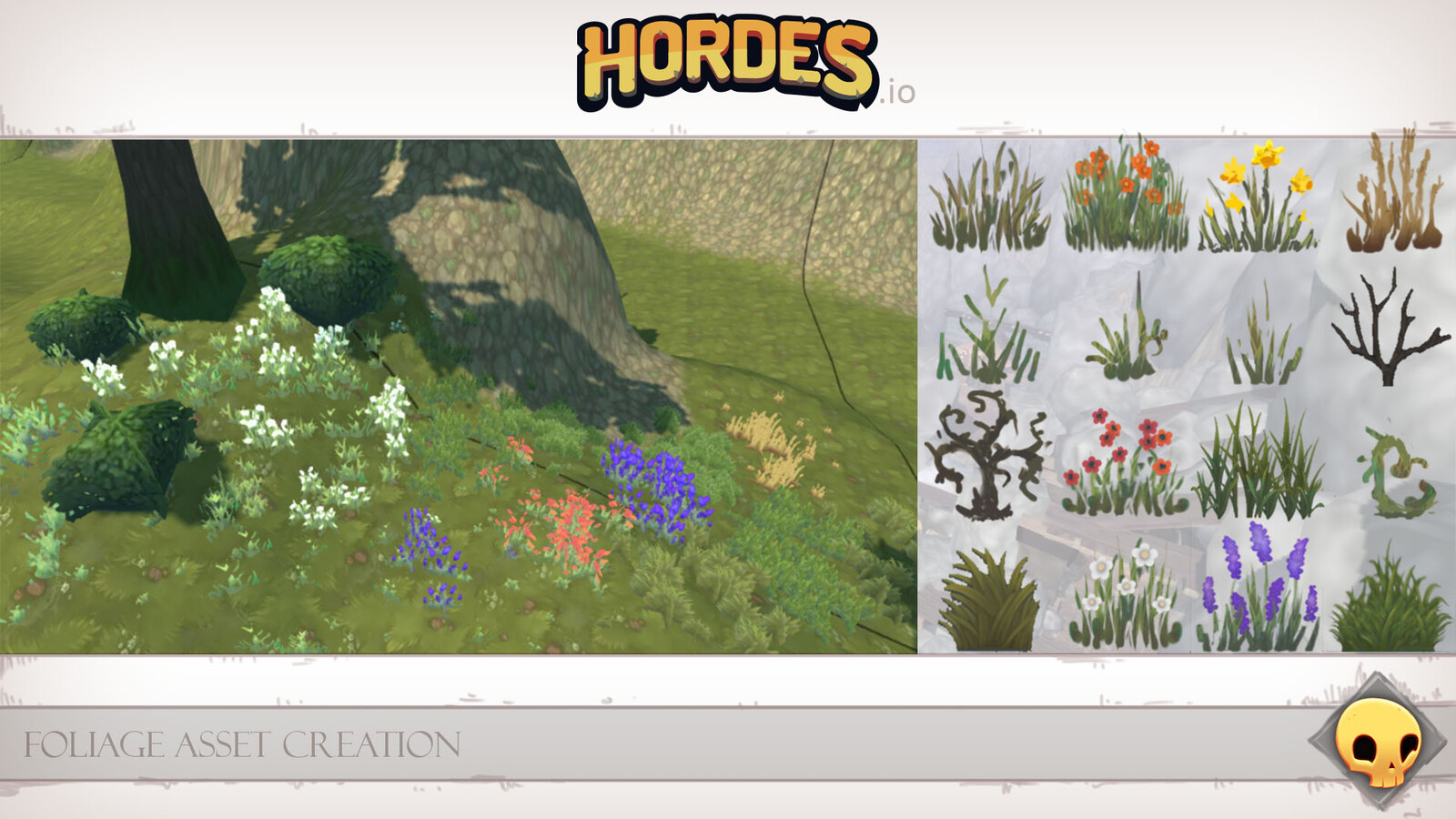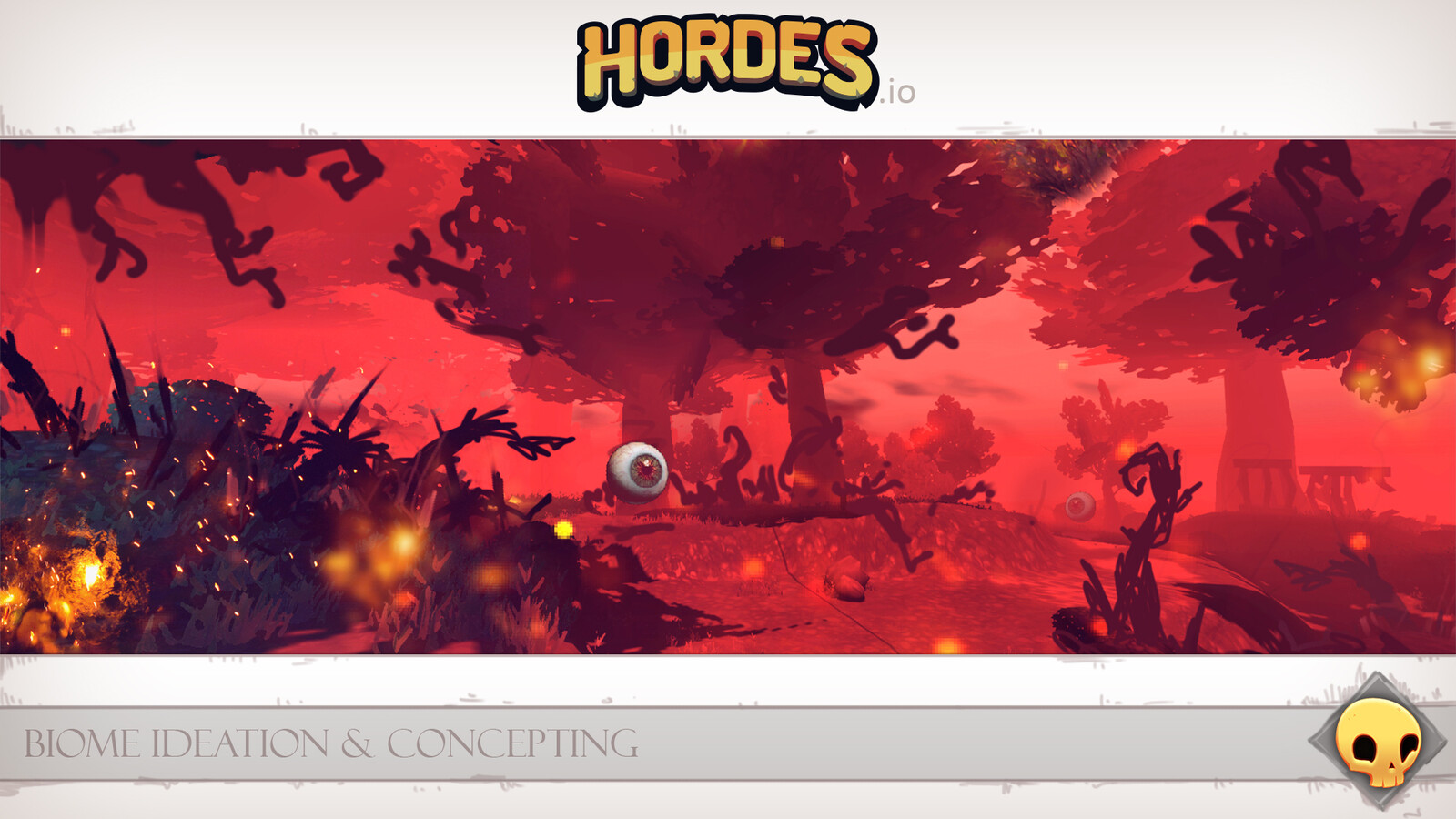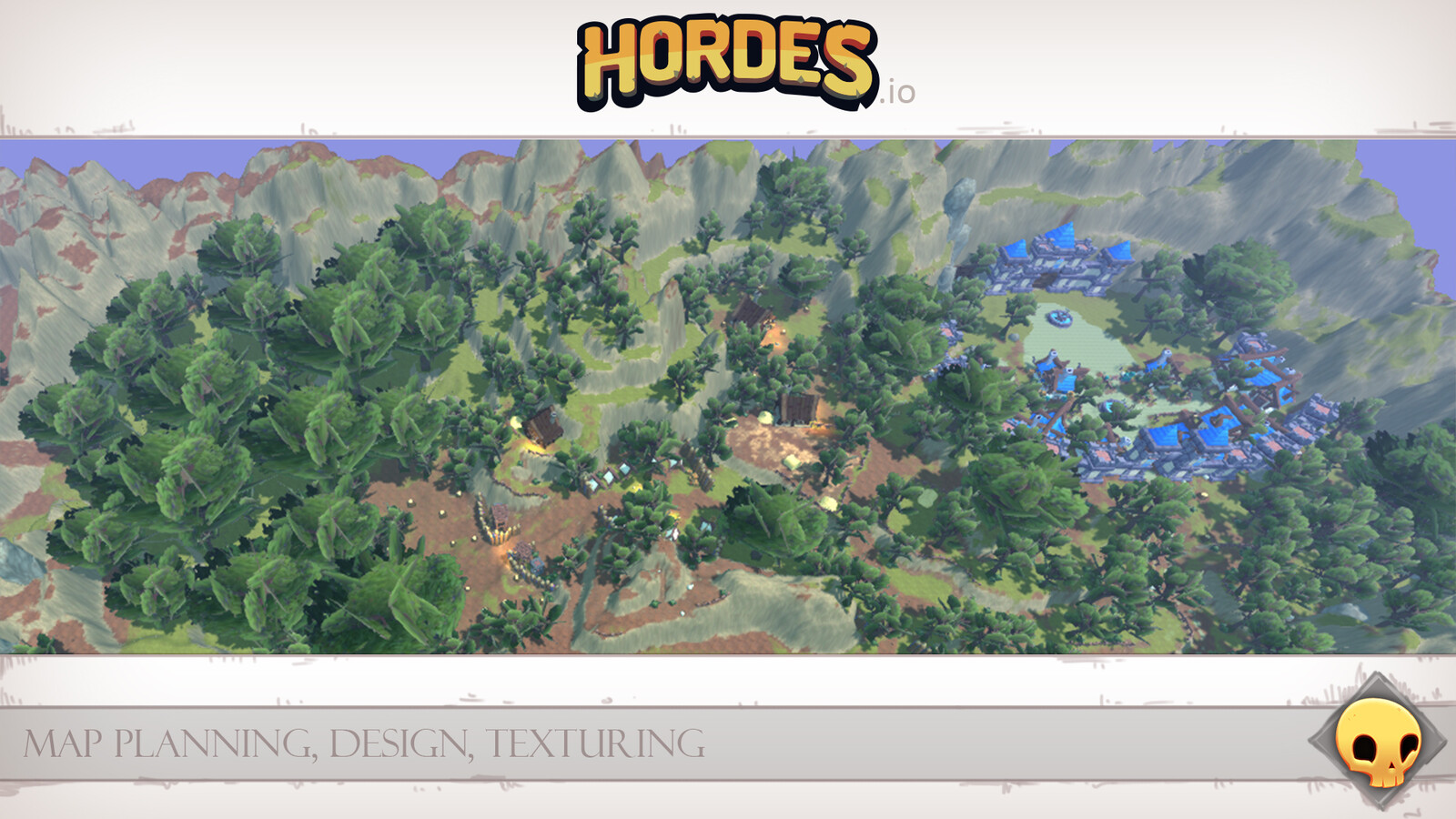Hordes.io - Art Direction of a no-budget Indie Browser MMORPG
Hordes.io is an indie browser MMO, developed by one person(dek), with me doing the Art Direction and Asset Creation as the game transitioned from its alpha stage to open beta.
My tasks were broad and touched on almost all visual aspects of the game, from UI work, logo Design (finalized by dek), concepting, visual development, ideation of environments and content, lots of playtesting and feedback-loops, planning and execution of the game's maps(together with the team), creation of the prop assets and their textures and a ton of communication, reflection and micro decisions.
Hordes.io Open Beta - Trailer
Shortly after Release, the game was featured by a big youtuber


